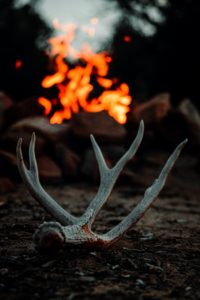
Something deplorable is occurring in the hollows of Appalachia. A person might trek through the woods or walk along a dirt road and see deer carcasses lying here and there. They are not dying for natural reasons. They are not succumbing to disease. Instead, they are victims of people who drive through backroads, shoot bucks from their vehicles, then get out, remove the antlers, and leave the carcass. Sometimes the animals aren’t even dead; sometimes, mercifully, they are. This senseless poaching occurs mostly at night, at least in the county where I grew up (Campbell County, Tennessee). The incidents were once very rare, but have risen.
I must begin by noting: I am not a hunter. So, the information in this writing is not from a hunter’s point of view. My experiences come mostly from my father. He hunted. Oftentimes, what he brought home was all we had to eat. When deer season rolled around, he hung and splayed open the deer he’d caught, and, as he flayed and butchered it, taught my brother and I to use everything on the animal, to have respect for its sacrifice, to have a more ethical mindset. The animal’s life is honored but some sense of remorse sets in at having killed something just to eat it – and you don’t take it for granted. My father considered “hit and run” antler poaching cowardly and a senseless waste that went against God’s creation. Of course, deer poaching in itself is a problem, whether illegally hunting out of season or hunting without a license. But I digress a bit — back to antlers.
Erwin and Peggy Bauer, in their book Antlers: Nature’s Majestic Crown, point out that antlers are used as a symbol of strength, power, and prestige. The horns appear on military emblems and have been etched on coats of arms throughout history. The authors dive into a history of trophy antlers that goes back as far as 1696, when King Frederick I of Prussia tagged the “most expensive rack in history,” a sixty-six-point stag. He later traded the antlers to Saxony’s Frederick Augustus for two hundred of his tallest guards. Craftspeople, the Bauers write, use the antlers to make “knife handles, belt buckles, buttons, pipes, ladles, cribbage boards, and jewelry.” Antlers are in high demand worldwide. Some Asian countries use ground antlers to cure “acid stomach, baldness, arthritis, rheumatism, and impotence.”
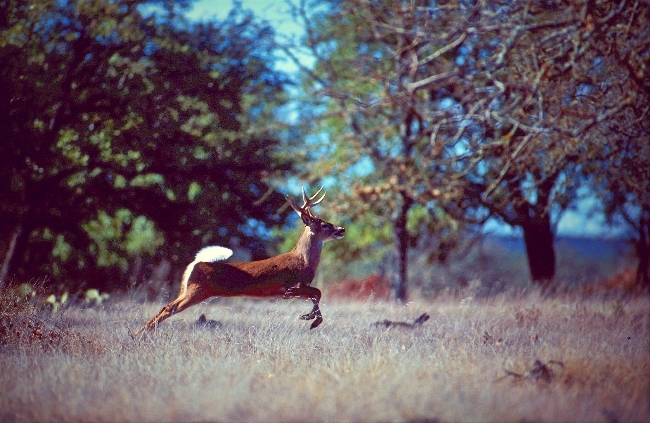
Deer poachers – antlers and all – are quite brazen. According to one Humane Society article, one particular case involved a deer killed in Georgia’s Stephen Foster State Park with the same aforementioned result: antlers missing, body left behind. The article also says “for every wild animal killed legally – tens of millions of animals per year – another is killed illegally,” and only one to five percent of poachers are caught. Those who are pay hefty fines and receive possible jail time. Two brothers in Fleming County, Kentucky, ran a deer and turkey poaching business. They pled guilty to over 114 counts of poaching. They were ordered to pay $20,000 in fines and restitution, and were put on house arrest. Their hunting licenses were revoked for three years. Tn.gov reports that in December 2010, four poachers were caught for killing trophy deer while trespassing near the Fort Campbell Military Installation (!). Bringing weapons to hunt near a military base begs for a noggin check. The poachers lost hunting privileges for several years, paid fines of $2500, and surrendered their stash of deer mounts and antlers. Stiffer punishments have been given. A man in Waynesboro was incarcerated for 80 days because he ignored Tennessee hunting laws most of his life. He received a lifetime hunting ban. More recently, the Cumberland Times-News reported in June 2022 about eight poachers arrested “in West Virginia’s largest known deer poaching case.” They killed thirty bucks in three different counties. One of the eight men was given house arrest and ordered to pay $33,000 “in replacement fees based on the antler spread of each illegally killed deer.”
States continue to try and curb the activity. Case in point, in 2015 Tennessee passed an amendment to a bill that enabled criminal courts to charge poachers restitution fines. Passing an amendment is one thing. Enacting the law is another. Game wardens are stretched thin. For example, one warden is in charge of the East Tennessee region and several surrounding states.
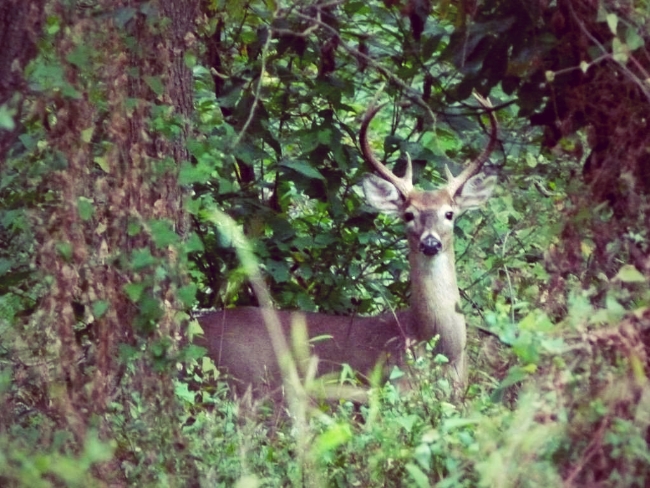
When I was little, I sometimes snuggled myself beside a tree or hid within bushes in the woods so I could watch animals and bugs. The first time I saw a family of white-tailed deer, it took away my breath. They were so close, about a yard or two from my little hiding place. Watching them eat, live, and play, was sublime and almost dreamlike. The world was different then (though every generation says that about the past).
Statistics say white-tailed deer are abundant in Appalachia. At one time, populations of other animals in the world were also abundant. I think about poachers in other countries who still kill for rhinoceros horns or tiger skins or elephant tusks. In 1900, the Rhinoceros population was over 500,000. Today, less than 30,000 exist in the world. Tiger populations have decreased 97 percent since 1900. Today, less than 4,000 tigers exist throughout Asia. In 31 years, the elephant population has declined 86 percent. One reason for the population decline is loss of habitat. Another reason is sickness and disease. But the chief reason is due to poaching. And dwindling numbers make their “treasured” body parts more costly and more in demand.
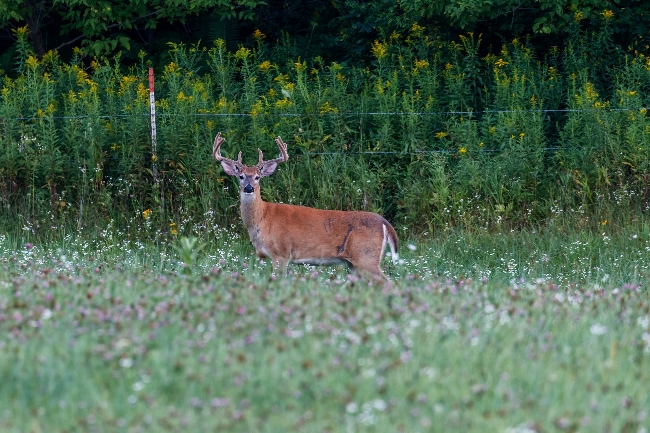
White-tailed deer are not in danger of extinction in these mountains as a whole. But they might be one day. In some Appalachian areas, their numbers are declining. Buffalo used to be plentiful in Appalachia.1)The buffalo population in Appalachia was around 2 to 4 million. Without hunting rules and restraints, buffalo were all decimated by the mid to late 1800s. Deer population has been somewhat lessened by sickness, like the fatal Chronic Wasting Disease. 2)In Chronic Wasting Disease, the deer waste away to nothing and stumble around, lethargic and uncertain before they collapse and die. Symptoms could appear a year after being infected. As yet, scientists have found no cure.
Hunters — real hunters — abide by the rules. They anticipate deer season, gather equipment, buy a hunting license, and go about the sport/ livelihood legally. According to laws in every Appalachian Mountain state, poaching is illegal. Without regulations on hunting, the white-tailed deer might end up like the buffalo.
I remember the first time my father found a dead deer with missing antlers near his property. He came in the house with glazed eyes and a pained expression. I asked him what was wrong and he told me. Afterward, he lowered his head before saying,
“I cain’t understand it. It’s just so senseless.”
**Featured image: Oscar Keys, Unsplash
Sources:
- My dad
- Antlers: Nature’s Majestic Crown by Erwin and Peggy Bauer. Voyager Press. 1995.
- https://forum.gon.com/threads/possible-floridians-poaching-deer-at-a-georgia-state-park.571541/
- http://www.humanesociety.org/news/press_releases/2010/09/reward_offered_in_deer_poaching_092710.html
- https://www.tn.gov/news/2010/12/22/four-face-multiple-charges-in-fort-campbell-poaching-case.html
- https://www.capitol.tn.gov/Bills/109/Bill/HB1185.pdf
- https://www.knoxnews.com/story/news/local/tennessee/2017/01/12/deer-costs-man-nearly-10000-under-new-tennessee-law/96480784/
- https://www.grandviewoutdoors.com/big-game-hunting/whitetail-deer/kentucky-poachers-get-off-easy#ViewPollResults
- https://www.times-news.com/news/local_news/defendant-in-massive-west-virginia-deer-poaching-case-to-pay-47-000-in-fines-fees/article_bf663236-e5d4-11ec-9438-333b8341e556.html
- https://www.helpingrhinos.org/why-are-rhinos-endangered/
- https://www.aza.org/connect-stories/stories/tiger-trafficking-threatens-extinction
- https://www.washingtonpost.com/lifestyle/kidspost/separating-elephant-species-shows-they-are-closer-to-extinction-than-scientists-thought/2021/04/02/60211d2a-9186-11eb-bb49-5cb2a95f4cec_story.html
- https://dwr.virginia.gov/blog/the-virginia-appalachian-deer-study-understanding-population-dynamics-of-whitetails-west-of-the-blue-ridge/
- https://www.cdc.gov/prions/cwd/index.html
- https://www.nps.gov/articles/bison-bellows-9-16-16.html
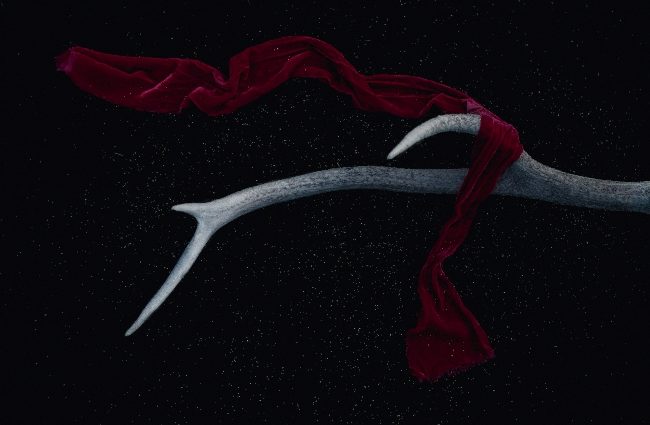
Senseless and so sad. I really liked your featured image and the additional photos.
Hello Peg. Yes, it really is both senseless and sad. It’s shocking that people have no regard for living creatures like that. Hunting is one thing. Poaching just for antlers is another.